December 2015 – January 2016
This is an account of a project where I took three groups of children through evening tiredness after a day at school, and travelled deep down Goatchurch Cavern in The Mendips. I witnessed them enjoy the sensations of a damp but not watery cave, become familiar with the habitat of bats and cave spiders and become at ease in amongst rocks and edges in what, for the children, essentially became a stone play park for an evening. I then led writing workshops with them.
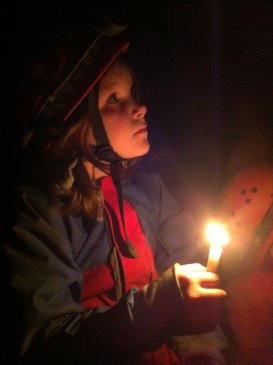
Photo: Gabriel Gilson
- Planning the project: how it came about.
- Caving.
- Workshops: I am going to describe what I did in the workshops, with the hope that this might be interesting and useful for others, including here a few examples of the writing.
- Additional writing (in the end notes) and more photos.
- Planning the project: how it came about
Late November 2015
I am commissioned in late November, over tea at my house with Stuart Bardsley of Discovering Blackdown Project http://www.discoveringblackdown.org.uk, to take groups of children down a Mendip cave, then run educational creative workshops with them.
The aim is to bring awareness to the Mendips, in particular Blackdown (the highest hill in the Mendip Hills, Somerset), to the children. It’s all funded by the Heritage Lottery Fund, so it’s free for the children. I have heard from a caving friend that December is a good month to cave – caving instructors and caves are less busy.
Mid December
- I have asked Robin of Somerset Adventures to be the professional caver in charge of the activity (for two reasons: 1. I met him randomly on a walk as he emerged from Goatchurch Cavern, along with a boy whose inspired Grandad had employed Robin for the day. Robin is an ex GP and since I often work with GP’s, I am intrigued about his shift in career. I also think this bodes well for trip safety.
- I have got most of the Scouting leaders on board and they have sent out emails to parents. Pip Riley is asking the boys in Scouts who she thinks will benefit most from the offer.
- We have full sets of children (with a waiting list) who all want to go caving in the ten days before Christmas… all of which I thought was a long shot.
- Robin and I decide on exploring Goatchurch Tavern. The trips have been divided up so that it’s three groups of eight children, mixed ages and a mix of girls and boys. I have made an effort to encourage girls to come: in spite of the Brownies not taking part officially, two Brownies will be able to come with Cubs, and three guides have signed up.
- Caving

Photo: Gabriel Gilson
Even though some of the children have been down Goatchurch Cavern before, Robin brings new stories and takes us down new passages, or familiar ones in a different way, so that there is a feeling of real adventure to the evenings.


Photos: Gabriel Gilson
Observations:
- I decide, after three damp, dark physical evening caving trips, at the time of year I could be late shopping and wrapping up presents, that caving is the perfect feral, healthy antidote to all things Christmas. It’s deep below the earth and there are no tinny renditions of Rudolf the Red Nosed Reindeer, or images of Santa anywhere to be seen *note to self to do this again next Christmas*.
- Things I don’t enjoy: disciplining bundles of over excited kids who won’t go one at a time, but instead tumble over each other seemingly head first into holes – “X jumped on Y’s head Miss, and then Y Kicked Z”; running, chasing naughty boys who hurtle too fast towards the pitch black road (once we’ve got out of the cave); asking the children to listen, endlessly.
- More things I enjoy: sloshing through streams on the way up to the cave; slipping down dark passages and squeezing myself through crevices in a hard hat and overalls; being held by rock; persuading my knees and muscles to navigate challenging climbs; the pleasure of physical capability; the hidden wildlife and physicality of being far beneath the earth; those still moments when Robin describes how to navigate the next passage, hard hats on children, tiny red lights flashing.
- I take voice recordings just after the caving, where I ask the children for their impressions, and to state colours, smells and sounds that they’ve seen.
- There are no injuries. Caving is, as Robin says, actually pretty safe.
- In Arthur’s words. “That caving was so amazing. I did all the challenging things. The belly dip was awesome. Probably the best of the lot.”
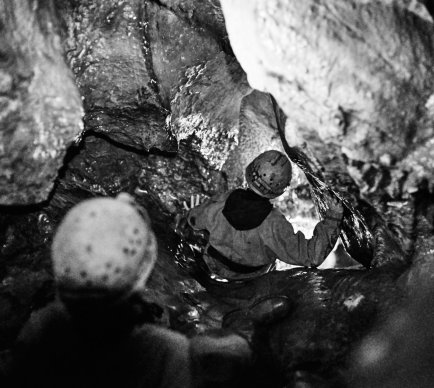
Photo: Gabriel Gilson
- Workshops exercises and writing
January 2016
By the third week of January, all the writing workshops have been completed.
This is how the numbers panned out.
- Workshop 1: 7 cubs
- Workshop 2: 8 scouts
- Workshop 3: 14 guides (12 of which hadn’t attended this caving trip, but most had been caving other times).
- Workshop 4: 2 brownies and 1 cub at my kitchen table.
So the workshops….
The Cubs are raucous but engaged.
“This is fun,” says Jaiden, to the boys next to him, during an exercise we’re doing, which makes me happy.
Another boy says to me at the beginning, ‘I can’t really write, can I do pictures instead?’, to which I answer, ‘Of course.’ However, the boy gets really absorbed into the writing, especially with his own unusual rhythmic poem, which he’s reluctant to stop.
The Scouts are animated and excited throughout the workshop and produce excellent writing.

At the end they perform some of their writing to the rest of the Scouts, which goes down well.

The Guides are more distracted at first. This is in part because I have asked the whole group to take part, 14 girls in total, when only two of them had actually been caving and it takes a while to ‘catch them up’ on the caving experience. I also regret using a long thin table, which wasn’t as conducive to intimate work as the round tables in the other groups. Mid way through I change position to some low stools, which helps, and also I do a bit of stand up drama work which relaxes everyone. The guides settle in, with the help of their leader and we get some good work out of them.
Workshop exercises
Here, I will describe what I do in the workshops.
Then I will follow up by sharing some of the children’s work. A couple of things to say about this. I’m not correcting spelling mistakes in their writing: it’s written here as they wrote it. Also, there wasn’t time to edit any of the work in the workshops, so this is how it comes out first time.
Task 1: To warm up, we remember the trip using photographs and the voice recordings that I took just after the caving.
I ask the group to stand up and ‘send a word round the circle’. One person chooses a word, (in this context a caving related word) such as rock, then the next person has to ‘catch it’ and send it on to the next person, by saying it in much the same way that it has been said. This way, the exercise is about listening, rather than reinvention: it becomes quite hypnotic and rhythmic. It is a good antidote to over excitement in a group.
Task 2. The writers start to gather words and ideas… I emphasise that the point here is the quantity, not the quality of the writing. It’s ok not to spell things well, or worry about what the writing looks like, because it’s about the ideas being free to come through. (Grammar and spelling can always be corrected later if necessary).
Task 3. Focusing on creating a sense of place. I ask the children, without thinking too much about it, to write down answers to these prompts: One thing you saw when caving; Two colours; Two tastes; Three sounds; Four smells and Five textures.
I like Scarlett’s answer to ‘One thing you saw’ – it was, ‘Bats like pencil sharpeners’ and William wrote down: ‘A caramel waterfall’ to describe the ‘limestone waterfalls’, which Robin had shown us, which had formed over thousands of years of dripping water.
I asked the cubs to write down their emotions, and I had a whole range: Excited, Scared, Happy, Sad, Tired. Another Cub said, “I felt really quite (sic) and very nervous. Sounds around me were cool. I heard rocks.” (Dilan)
For more examples, see end note [i]
Task 5. This exercise is about focusing on creating characters: including the question of whether to write in first person or third person?
I say: “Looking at the caving experience, whose point of view can you look from? The ideas can be as imaginative as you like.”
Some of the ideas are The Dark, Bones, The Handrail, The Air
I fire out a lot of questions. I ask the children to write down answers without thinking too much about it. The aim is to build a whole character, with a path… what do they look like, history, desires, looks etc in order to bring them to life. The aim is also to excite their imaginations.
Here is an example, again from Bede, who is looking from the point of view of “The Cave’s Mouth, which has seen many people passing by.”
What do they look like? Bede: Grey and jagged.
Who are their friends? Bede: Hates all.
What is their job? Bede: Sits still.
What do they want more than anything else? Bede: Peace and quiet.
What do they have in their pockets? Or if they don’t have pockets, what would they put in a pocket if they could? Bede: Stories, stalactites.
What game would they like to play? Bede: Sleeping lions.
What is the worst thing that could happen? Bede: Nothing.
Task 6. A writing exercise focusing on Goatchurch Cavern.
This goes like this:
- Write a list of five things that you saw in the cave
- Then five textures
- Five emotions
- Write a stanza using these lists. Use a specific amount of words on each line: 1357531. Having strict rules for a task always forces writers to become very inventive.
- Share the poems. To the reader: Never apologise for your work, just read it.
- To everyone else: Pick out one thing you liked about the piece and share that.
The results are as follows, and I think show how the children are empathizing with different parts of the cave, exploring their own relationship to the landscape and to themselves:
Bede: Scout
Sleepy
Annoyed and sharp
Why to me, you come
To explore my expanse of cavernous depths
Then you go away
Part of me
Leaves.
For other examples see end note[ii]
Task 7: What am I?
This is about reading out some writing to the rest of the group, without saying who the character/ the point of view is, and allowing the audience to guess.
The Scouts are the only group that do this. They all go through their cave characters, and the other Scouts (who hadn’t done the workshop), listen, guessing.
What am I? by Oliver
I have red stuff pouring out of me and I can no longer do anything. I used to have friends and would swoop around in the darkness collect my food. One day I was going around my dayly bisnis when splat! And I suddenly went to a cloudy palace! I can fly again. All the food in the world was there I could just do nothing all day, No hunting! But the best, bit, the best bit was I had no flees. I was so full of myself I crashed smack bang in the face against a piller and was out cold. Once I had come back to my sences a spiky tooth, horned figure stood over me. The devil! Noooo!
What am I? by Bede
How dareth thou take thy presence nearth thine as all thine wants to do is sleep and lye. Stories and stalactites in harmony, peace and quiet for eternity.
(Trespassing travelers strolled arrogantly into thine mouth.’
Answer: A cave’s mouth
For others, see end note[iii]
Task 8: Sticky notes and Free writing
Everyone writes someone they’d like to take down a cave on one sticky note and lay them out on the table next to each other. For the next sticky note, everyone writes down what that person wants more than anything else, and puts that sticky note underneath another random one. The following sticky notes all have words on them, all which make up the character, but are randomly laid underneath the others. Next, everyone picks one vertical column of stickies, and write about that.


I also asked the guides to write freely for three minutes from a point of view of their choice. Here are some of the results:
Her small blak eyes surveyed her pray as they strolled past. They were loud and obnoxious. She stretched her wings and readied herself for attack one let out a high piched squeel and shone a bright light onto her body. The dark spikes of her fur distorted her shadow. Irritated that she had been disturbed, she flew at them, fangs ready to peirce their veins. (Unknown Guide)
Other examples, see end note [iv]
Task 9: Group writing
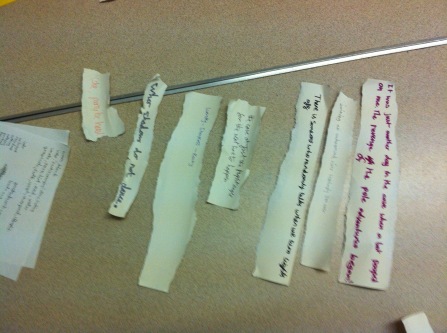
I asked Scouts and Guides to choose their best phrases, or get partners to do the same, then I gave them a minute only to put all the phrases together to make a poem or a story.
The Scouts created this one:
It was just another day in the cave when a bat pooped on me. The revenge of the pole adventures began!
Joining an underground river seemingly for ever,
There is someone who randomly talks when we turn lights off.
The cave at just the right angle for the next time to happen,
Lumpy –Shapeless-Rocky,
Where shadows do not dance.
Cave, party he hated.
This came from the smallest group, the three Brownies/Cubs:
Drop eats a bit of air – Bob had given him some because, Drop’s helmet looks like bowling balls. It is very rocky in the cave.

Other examples, see [v]
Task 10. This task was just for me. I wanted to create a piece of writing, which tumbled out of the landscape, the children and the caves.
See end note [vi]
Finally, it’s early February and I have been handed some handwritten accounts of the caving trip by two of the boys who didn’t make the writing workshop.
Wojtek Aleksinska (Scouts) wrote:
The Caving trip was thrilling and fascinating. I have been caving four times before and I never have been on a better caving trip. The two hours of caving were definitely worth it. Not only this caving expedition has been challenging and fun but we all learned about the caves and the things inside them. I also really enjoyed the absaling from one hole to another and the climbing upwards to the other part of the cave. The moment when we had to crawl through a tiny tunnel was the most cool because I have never done it before. In all for me it was an amazing expireance and I would love to do it again.
Bartek Aleksinska (Scouts) wrote:
I very much enjoyed the caving trip that took place at Burrington Coombe. I have been caving quite a lot however I still found it very fun, interesting exciting and adventurous. I was very interested in all of the shapes and object there were down the cave like animal bones and bats. I was also very sapprised in how small gaps we squished through. Further more I found it really fun sliding down the steep slopes. It was by all means the best caving trip I’ve been to.

Photo: Gabriel Gilson
End notes: additional writing
[i] For an example of a full list, Bede, one of the Scouts wrote:
Two colours: Absence of light, Absence of black
Two tastes: Mud, Dampness
Three sounds: Bats, Dripping, Scuffling
Four smells: Mud, Watery mud, Viscous mud, Water
Five textures: Tough, Smooth, Viscous, Runny, Smooth as ice.
Other example of smells were: Mud, Water, Pungent, Musty (George)
Smoke, Fresh dirt, Mud, Water (unnamed Scout)
Other examples of textures were: Smooth, Grainy, Rough, Rigid, Wavey (George, Scout)
Grayscale, Earth, Rough, Sharpened, Chlorophil. (Unknown Scout)
Rough, Bumpy, Jiggered points, Smooth ((Hannah, Guide)
[ii]
William: Cub
Excited
Out of breth
I was relly relly scared
Desperat to get out of the cave
I want to get out
I’m nerly ther
There.
George: Scout
Well
I get annoyed
When we turn lights off
There is someone who always randomly talks
They annoy me so much
I wish they
Didn’t
Scarlett: Brownie
Bats
Scattering themselves everywhere
Creeping in the darkness, terrified
Spiders crawling at the top of
The cave, feeling weird and excited
Scattering themselves everywhere
Bats
Natasha: Guides
Stupid
Small human being
Shouldn’t have come to my
Glorious cave and yell very loudly, slowly
Hate him, hate him so
Much hate
So
Annabel: Guide (unfinished)
Darkness
Lonely Black Darkness
This is where I live
Lonely, on my own. In complete darkness.
Gabi: Guide
Bat
In a cave
Eating a nauciating orange banana
While flying through the black dark sky
After finishing the organge banana
He flew back
Home.
Unnamed Guide:
Red
The eyes red
Alone cold, have alone cold
Room, cold, sadness, life, cave, dark
Alone, cold, have alone cold,
The eyes red
Red
What am I?
Jaiden: Cubs
Silence
Just sitting there
Ten pound note in my hole
I never move away from stuff
Waiting
(Written from the point of view of Air)
[iii]
What am I? (by unnamed Scout)
But when though comes to thine
It is sleep that thine pines,
Until thou goes away
Hine shalt not sleep another day.
Answer: A dead bat
What am I? (by unnamed Scout 1)
I fall from the sky, I peirce into the ground, unless the ground is non-permable, then I become surface runoff. I go into a flow of H2O, I heat and rise to the sky and repeat?
What am I?
Answer: I am a raindrop
What am I? (by unnamed Scout 2)
Everywhere
in places
around the world
helps people and life-forms
every-where such as around the nose.
Answer: Air
What am I? (by Scarlett)
The animal went into the cave and there he has his birthday party. He brings his most precious thing – a nut – and sings ‘America’. He climbs into a tent and turns into a poo. ‘Daddy’ he yells, eating a cabbage.
Answer: A cat.
What am I? (by Arthur)
Oh my friend James, he got washed away, I could not do anything! I curse my web of spider form. The flood killed him, brought him down, oh how I whish him not his spider body, and come back in my time instead.’
Answer: A spider’s web.
[iv]
Thirteen year old Cece whose favourite song was adele was about to go down a mysterious gloomy cave for a very sad occasion a funeral. (Hannah, Guide)
Down a deep dark cave, that stretched for miles, bubbles, the welly only wanted one thing and that was to be free. Bubbles didn’t like caves but he was being forced to go down it. One thing stood in his way and that was the tight holes he had to go down. (Maya, Guide).
Deep in the shadows of the caves at Burrington Hole, within the porous bubbles and deep cracks of the cave wall lives a very small creature. Silence… the mystical Mendip snail. All is quiet. She is suddenly woken from her winter’s slumber by a light beaming into the hollow. She pokes her head out of her pointed shell, and surfaces into a darker hiding spot… (fragment from Aimee-Claire: Leader, Guides)
Bubbles was a welly
He went to a party for Nelly
In a cave with this lucky pillow
But he wanted to be in Madrid with silk pillows (Jasmine: Guide).
Woody (Cubs) wrote:
I was in the cave
I was in the cave
I was feeling hard
Rough stone
I was in the cave
I was in the cave
I was hearing silence
William (Cubs):
All wanted was silen please god give me real silence. Then all of a sudden I heard this clump of children wich sounded like a herd of eliphents.
Ollie (Cubs) wrote:
‘rock toc a rock dog for
in his pocets were
His hands and
Met a dat fkiw
[v]
This was the Guides’ group writing
DARKNESS!!!??
Down a deep dark cave that stretched for miles
Thirteen year old cece who’s fav song was adele was about to go down a mysterious gloomy cave.
One day while eating a nauseating orange banana he died… RIP Nigel.
He saw, as he opened his eyes, a raging hen party,
Gras was scarce over the colder months,
There was nothing she loved more than cudding her teddy who reminded her soooo much of cleanliness.
Finally Fernando the uicorn realized his cave was much too small and he needed to buy a mansion in spae with Ronaldo the hamster.
Endless dripping of the water off rocks
… and a pool that he went under water in.
His wife Izzy was 1
We kept on playing weels on the Bus.
Can stil bring it like Kim Karasian,
That poor little mole called Cece
Partying til the very end.
And also from the Guides:
There once was a mole called Cece
Who had a twin sister called Mimi
In the kitchen they would bake
While eating sour cake
Listening to the song No Diggity.
She went to a cave for her death
And with her was Beth
That poor little mole called Cece.
[vi]
Cave offering, by Elspeth
Torn I go,
In December,
Down the giant staircase,
Two hundred,
And fifty,
Thousand years old.
A lesser horseshoe clings on tight.
Torn I go,
A rock like a worn out dashboard
Rolled up wrinkles, a frozen waterfall,
A bony vegetable smell.
Torn I go,
Down The Drunkard’s alley,
Black burned chocolate marks,
Sooty Victorian deposits.
Tender leap over an ochre crease,
Stalectites (tight to the ceiling),
Brightening with all their shininess.
Torn I go,
Down The Coffin,
Dead air chambers,
Stale,
Cold boulder, columns forming,
An old man’s face.
Torn I go,
Down The Squeeze,
Calcit and Moonmilk deposits.
There’s a bit of a drop-off,
Where life’s been taken out by volcanic ash.
Torn I go,
Down The Badger Pit,
Down Hobbit stairs,
Down The Diamond Chamber,
Down a shallow descending sandy slope.
Then,
Wave by wave, I inch up,
Reach up whole bodied,
Past acrid bat bones and
Hand-like prints in cold stone.
I rise,
Piece by piece,
Our guide tells of,
Bones of lion, woolly mammoth,
Dragged into corridors,
Past veins below earth,
Walls of enfolded seashells,
Clogged by mud.
See ghost cavers, clothed capped,
Trouser legs tied with string,
Clearing.
Ladies in wet through knitted skirts,
Hanging from old hemp rope,
Heavy,
Hands, arms, feet and spade,
Clearing.
Painting sooty letters,
On sloping shelves,
Clearing,
An amber glow of candles, or carbide lights on belts.
Clearing,
For today’s bright torches, kids’ voices.
Slipshod I fell,
The tremor in my back,
Broken by the violent flood,
The cold breaking my resolve.
Clearing, I
Flood out the dust,
Clearing
Torn I go,
Clearing, I
Reach up whole bodied,
Hand into notch,
My torso hugging slimy walls.

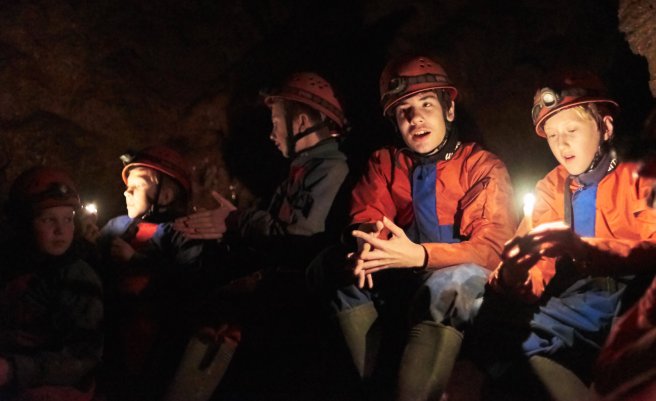


Photos: Gabriel Gilson
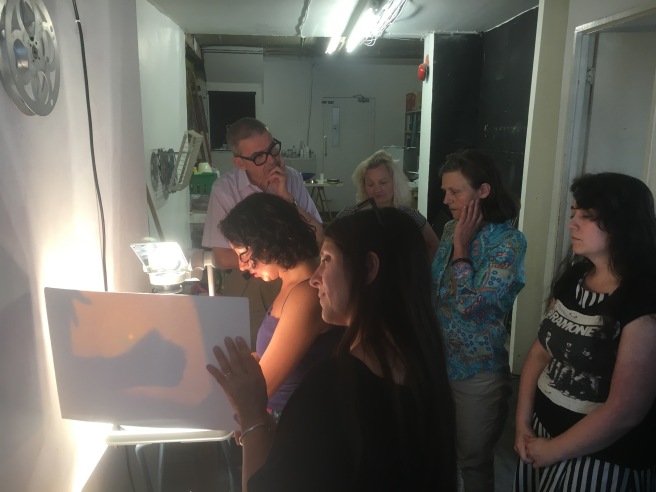







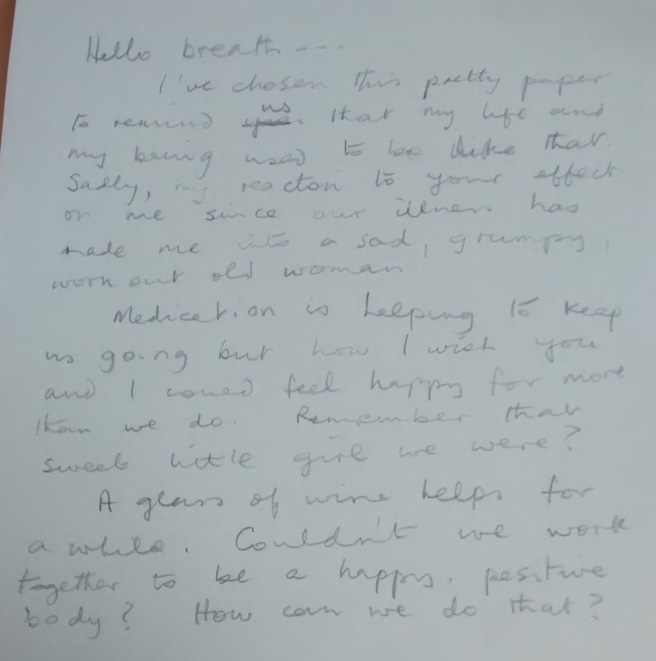


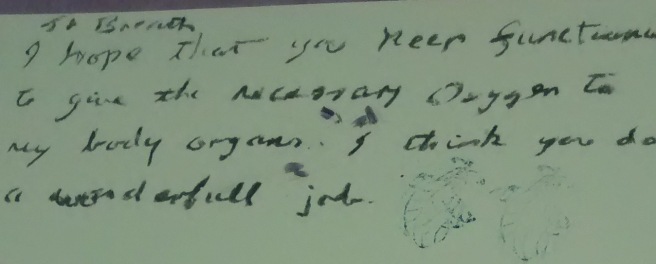

















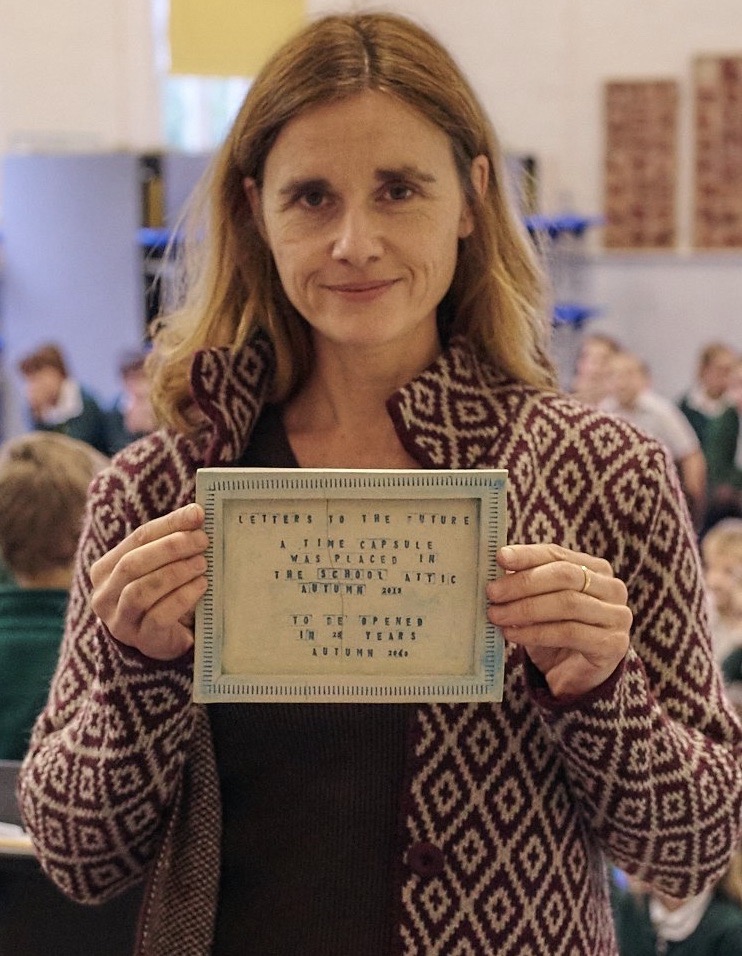


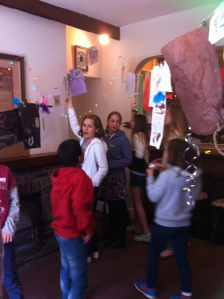






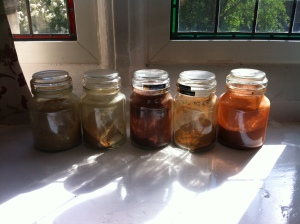

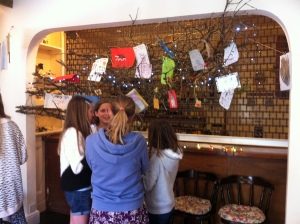




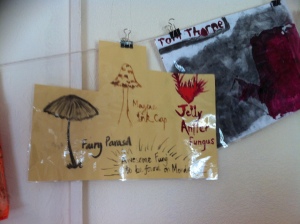


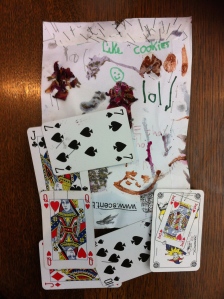





You must be logged in to post a comment.